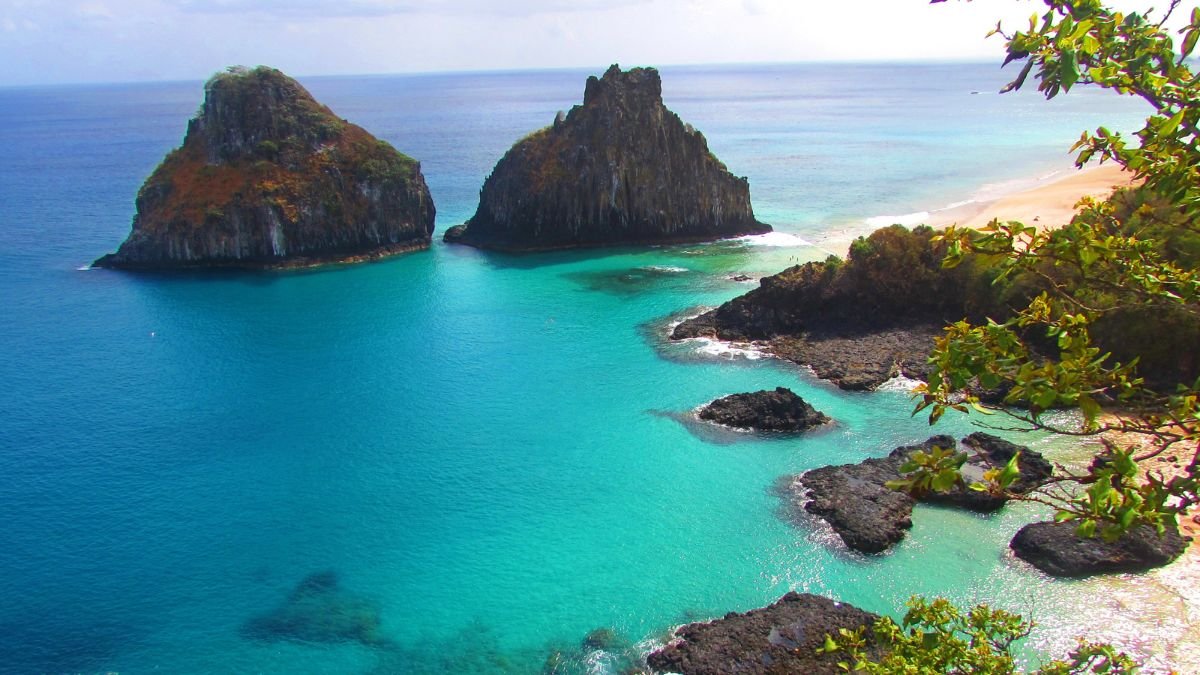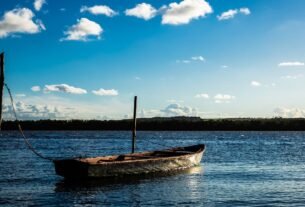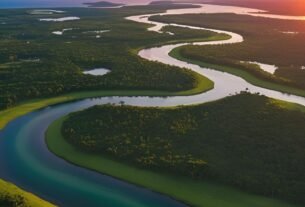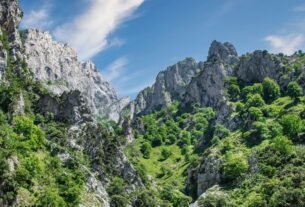Introduction
Have you ever wondered where to find the most breathtaking beaches on Earth, like those in Fernando de Noronha Brazil? A place where turquoise waters meet golden sands, and nature remains untouched by mass tourism? Imagine soft, warm breezes caressing your skin as you stroll along the shore, with the sound of gentle waves lapping at your feet. Look no further than this UNESCO-listed paradise.
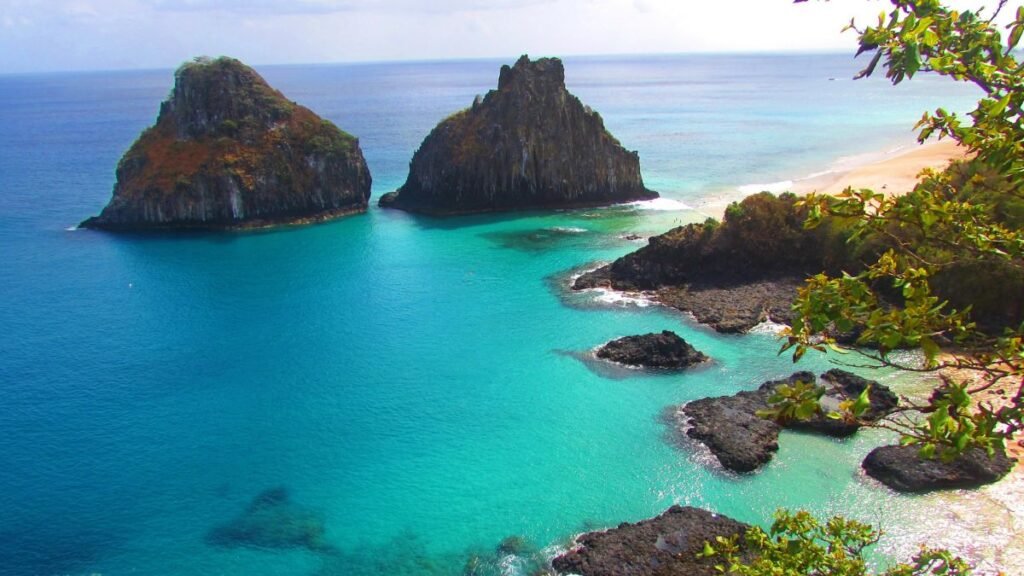
Located 220 miles off Brazil’s coast, this stunning archipelago serves as a marine sanctuary, with just one inhabited island, which helps maintain its unique ecosystem. Its 21 islands and islets are home to some of the world’s most pristine beaches, protected by strict visitor limits that ensure the preservation of their natural beauty and biodiversity. The crystal-clear waters are teeming with vibrant marine life, making it a haven for snorkelers and divers alike. At the same time, the lush landscapes provide a breathtaking backdrop for those seeking tranquility.
Balancing tourism and conservation, this destination offers a rare escape from the hustle and bustle of modern life. Below, we explore seven iconic shores that redefine paradise, each with its own unique charm and allure. Get ready to discover not only crystal-clear waters and vibrant marine life but also landscapes straight from a postcard, where every turn reveals a new adventure waiting to be experienced.
Key Takeaways
- A UNESCO World Heritage Site with protected marine ecosystems.
- Only the main island is inhabited, preserving natural beauty.
- Strict visitor limits ensure sustainable tourism.
- Home to some of the clearest waters and finest sands globally.
- Seven must-visit beaches offering unique experiences.
Introduction to Fernando de Noronha Brazil
Few places on Earth blend raw beauty with conservation as seamlessly as this archipelago. Located 220 miles off Brazil’s coast, its 21 islands are a testament to volcanic forces and marine splendor, showcasing dramatic cliffs, lush vegetation, and stunning beaches that captivate visitors. Only one island is inhabited, preserving 10.3 square miles of pristine landscapes, which serve as a sanctuary for various species of flora and fauna, some of which are endemic to the region.
Designated a UNESCO World Heritage Site in 2001, the area was established as Brazil’s first marine national park in 1988, underscoring its ecological significance and the need for protection. Strict rules now limit visitors to 366 per day, ensuring ecosystems thrive and allowing the natural beauty to remain largely untouched. Below, key facts highlight its uniqueness, emphasizing not only the stunning vistas but also the critical conservation efforts in place to maintain this ecological treasure:
| Feature | Detail |
|---|---|
| Marine Biodiversity | 230+ fish species, 15 coral types |
| Visitor Policy (2023) | Max 366 daily tourists |
| Access | 1h20m flights from Recife or Natal |
The archipelago’s isolation fosters rare encounters with wildlife. From spinner dolphins to sea turtles, its waters are a living aquarium. Flights from mainland cities make it remote yet reachable—a perfect balance for adventurous travelers.
Why Visit Fernando de Noronha?
Award-winning shores and rare wildlife make this place unforgettable. Voted among the world’s best beaches by TripAdvisor, its crystal-clear waters offer up to 45m visibility—a dream for divers and snorkelers. The vibrant marine life, including colorful fish and intricate coral reefs, creates an underwater paradise that beckons adventurers and nature lovers alike. Visitors can explore these stunning environments through guided snorkeling tours or diving excursions, which not only provide unforgettable experiences but also foster a deeper appreciation for the preservation of this unique ecosystem.
What sets it apart? Strict visitor quotas create an exclusive experience. Swim alongside nurse sharks, sea turtles, and *rare* spinner dolphins in protected bays, where the clear waters allow for stunning visibility and intimate encounters with these magnificent creatures. Volcanic shelves form natural pools teeming with life, providing a unique habitat for a diverse range of marine species and allowing visitors to observe the intricate relationships within this vibrant ecosystem.
The archipelago serves as a living laboratory for conservation, highlighting the delicate balance between tourism and environmental preservation. Its policies ensure marine life thrives, making it a model for sustainable tourism practices that other destinations aspire to replicate. Below, you’ll find iconic encounters that can be found nowhere else: from the playful antics of dolphins to the serene gliding of sea turtles, each moment is a reminder of the beauty of nature and the importance of protecting it.
| Wildlife | Unique Feature |
|---|---|
| Spinner Dolphins | Daily acrobatic displays in Baía dos Golfinhos, where they leap and spin joyfully in the surf |
| Mabuya Lizards | Endemic bird species, which add to the rich tapestry of wildlife, are often seen flitting through the lush vegetation. |
| Noronha Elaenia | Endemic bird species that add to the rich tapestry of wildlife are often seen flitting through the lush vegetation. |
From geological wonders to cultural significance, this is more than a beach getaway. It’s a front-row seat to nature’s finest work, where every visit deepens your connection to the environment and inspires a commitment to its conservation.
7 Must-See Beaches in Fernando de Noronha Brazil
Golden sands meet turquoise waves in these seven coastal wonders. Each offers a distinct blend of adventure, serenity, and ecological marvels that cater to a variety of interests, from thrill-seekers to those looking for a peaceful retreat. Below, explore shores that consistently top global beaches rankings, attracting visitors from all over the world eager to experience their breathtaking beauty and unique ecosystems.
1. Praia do Sancho
Voted the world’s #1 beach by TripAdvisor, Sancho dazzles with its emerald cliffs and a steep ladder descent that adds an element of adventure right from the start. Rock climbers adore its vertical challenges, while sunset chasers flock to its western vantage points to witness the sky transform into a canvas of colors. The beach is also home to a diverse array of marine life, making it an ideal spot for snorkeling enthusiasts seeking to explore vibrant underwater ecosystems.
2. Baía dos Porcos
Tide pools glow with neon fish beneath the iconic Morro Dois Irmãos rocks, creating a picturesque scene that captivates all who visit. Snorkelers navigate shallow reefs teeming with life, while photographers capture the bay’s unreal hues at golden hour, making it a popular destination for both casual visitors and professional artists alike. The surrounding landscape, with its dramatic rock formations, enhances the bay’s charm, offering a stunning backdrop for relaxation and exploration.
3. Praia do Leão
This wide, wave-swept shore is a critical nesting site for endangered sea turtles, making it a vital location for conservation efforts. Strong currents make swimming risky, but conservation tours offer safe wildlife viewing opportunities, allowing visitors to observe these magnificent creatures in their natural habitat. The beach’s natural beauty is complemented by its rugged coastline, where dramatic cliffs meet the ocean, providing a serene environment for contemplation and appreciation of nature.
4. Praia do Atalaia
A volcanic shelf creates a natural aquarium—sunscreen is banned to protect its fragile ecosystem. Only 10 visitors per hour are allowed, ensuring an intimate encounter with starfish and octopuses in their vibrant underwater playground. This careful management of visitor numbers enables a more immersive experience, allowing guests to fully appreciate the delicate balance of marine life and the stunning clarity of the water, making it a true hidden gem for nature lovers.
5. Baía dos Golfinhos
Dawn at Mirante viewpoint reveals spinner dolphins pirouetting offshore, their playful antics delighting early risers. The bay itself is off-limits to swimmers, preserving its role as a marine sanctuary where these creatures can thrive undisturbed. This unique aspect makes it a prime location for wildlife enthusiasts who wish to observe these intelligent animals in their natural environment, fostering a deeper appreciation for marine conservation.
6. Praia da Caieira
Advanced snorkelers explore submerged whaling ruins here, while historians ponder the 18th-century stone pillars that stand as a testament to the area’s rich history. Currents demand caution, but the rewards are unparalleled, offering opportunities to encounter a diverse array of marine species that inhabit the area. The beach’s unique blend of historical significance and natural beauty makes it a fascinating destination for both adventure seekers and those interested in the region’s cultural heritage.
7. Baía do Sueste
Mangroves fringe this serene bay, where stingrays glide over seagrass, creating a tranquil setting perfect for relaxation. It’s one of the Noronha archipelago’s best spots for beginner-friendly snorkeling, making it an ideal choice for families and novice snorkelers eager to explore the underwater world without the challenges of stronger currents. The gentle waters and abundant marine life make it a delightful experience for all ages, encouraging a love for the ocean and its inhabitants.
Snorkeling and Marine Life Encounters
Dive into crystal-clear waters where marine life thrives in harmony, creating a vibrant underwater tapestry. Year-round 80°F temperatures make every swim inviting, whether you’re snorkeling shallow reefs, where colorful corals sway gently with the currents, or exploring deep walls that plunge into the mysterious depths of the ocean.
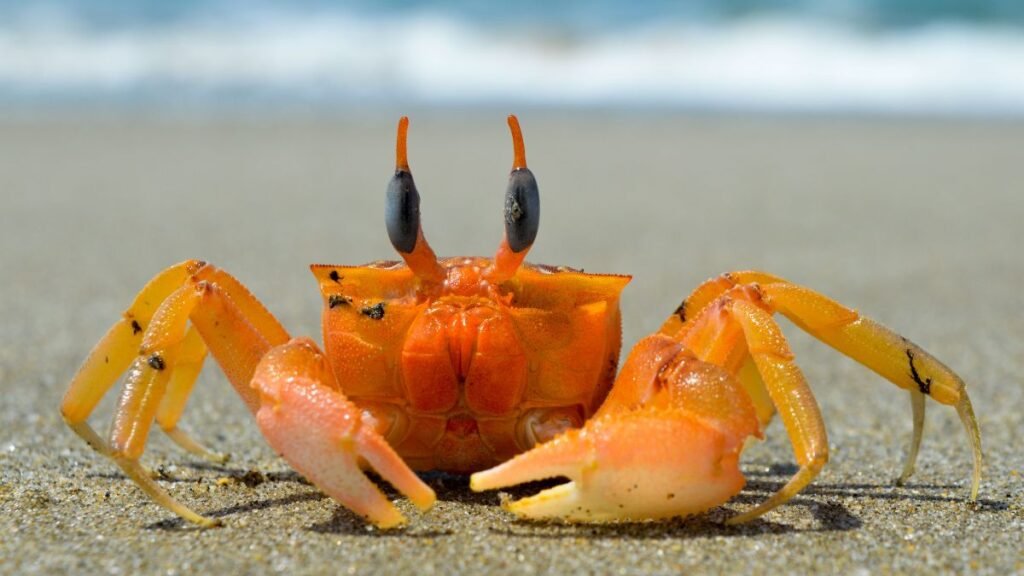
- Sueste Bay: Gentle currents and lush seagrass beds attract manatees and juvenile reef fish, providing a peaceful backdrop for those wishing to observe these gentle creatures in their natural habitat.
- Sancho Bay: Parrotfish and angelfish dart through volcanic rock formations, showcasing their brilliant colors and playful behavior, captivating snorkelers and divers alike.
- Atalaia Pool: A natural tide pool teeming with starfish and octopuses—visits are limited to 10 people/hour to preserve the delicate ecosystem and ensure a serene experience for all.
For diving enthusiasts, the Corveta V17 wreck and Ilha do Meio’s vertical walls offer thrilling drop-offs, where divers can encounter a diverse array of marine species. Advanced divers can navigate caves adorned with sponges and lobsters, discovering hidden treasures and unique formations that tell the story of the ocean’s past.
Respect the ecosystem with these essential rules:
- Use biodegradable sunscreen to protect coral and other marine life from the harmful effects of chemicals.
- Never touch marine life—observe from a distance to ensure their safety and preserve their natural behaviors.
Time your visit for seasonal spectacles that highlight the natural wonders of the area:
- Sea turtles hatch (December–March) at Praia do Leão, providing a rare opportunity to witness the miracle of life as tiny hatchlings make their way to the sea.
- Watch over 600 spinner dolphins perform their mating rituals (August–October) in Baía dos Golfinhos, an exhilarating display of nature’s beauty and complexity.
Local group Projeto Tamar leads turtle conservation efforts, working tirelessly to protect these magnificent creatures. Their dedicated patrols safeguard nests, ensuring future generations thrive in these pristine waters.
Fernando de Noronha National Park: Rules and Fees
Preservation efforts shape every visitor’s experience in this island paradise. The park enforces strict measures to protect its ecosystems, including fees, caps, and timed entries. These regulations are not merely bureaucratic; they are essential for maintaining the delicate balance of the island’s unique flora and fauna. Here’s what you need to know before visiting.
Fee Structure and Reservations
Foreigners pay R$358 (2024) for a 10-day pass, while Brazilians receive discounts. The fee includes both an environmental tax and park admission. This fee is crucial, as it directly contributes to conservation efforts and the maintenance of the park’s natural beauty. Key details:
| Category | Fee (R$) | Validity |
|---|---|---|
| Foreign Visitors | 358 | 10 days |
| Brazilian Adults | 186.50 | 10 days |
| Exempt Groups* | 0 | N/A |
*Children under 12, seniors over 60, and residents. Book time-slot tickets for popular sites like Atalaia Pool 30 days ahead via ICMBio’s portal. This advanced booking system helps manage the flow of visitors, ensuring that the park remains a tranquil haven for both wildlife and guests.
Visitor Limits and Restrictions
Only 11,000 visitors are allowed monthly. This limit is vital to preserving the park’s fragile ecosystems and minimizing human impact on the environment. Six attractions require reservations, and four trails mandate the use of certified guides to enhance safety and ensure that visitors do not inadvertently harm the natural surroundings. Protected reefs are off-limits to prevent damage, allowing marine life to thrive undisturbed.
- Capim Açu & Atalaia: Advance bookings of 30 days or more are essential to access these popular areas.
- Restricted Zones: No swimming or diving in fragile areas to protect sensitive marine habitats.
- Enforcement: Rangers and satellite monitors ensure compliance with these regulations, actively safeguarding the park’s integrity.
These rules keep the park pristine while offering unforgettable encounters with nature. They also foster a sense of responsibility among visitors, encouraging them to appreciate and protect this natural wonder. Plan ahead to secure your spot in this natural wonder.
Best Time to Visit Fernando de Noronha
Timing is everything when planning a trip to this tropical paradise. The archipelago’s dry season (August–January) offers sunny skies and calm waters, ideal for snorkeling. Meanwhile, from December to March, the eastern coast experiences peak swells for surfers.
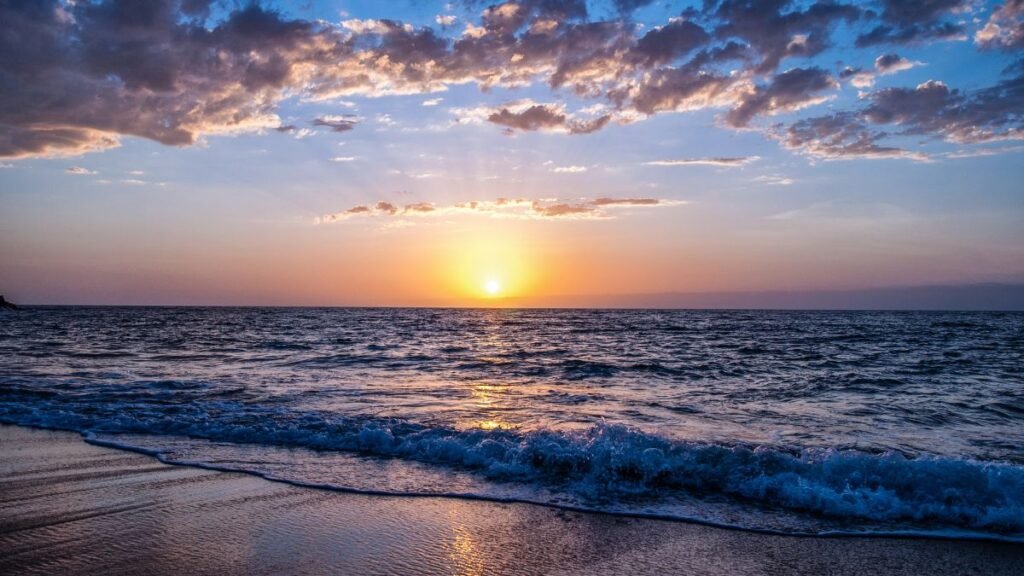
For budget travelers, February to April features lower prices and fewer crowds, making it an ideal time to explore the island without the hustle and bustle of peak tourist season. During this period, visitors can enjoy the beauty of Fernando de Noronha while taking advantage of special deals on accommodations and activities. September–November strikes a balance, offering clear visibility underwater and mild temperatures, making it perfect for diving and snorkeling adventures. Below is a seasonal breakdown:
| Season | Highlights | Considerations |
|---|---|---|
| Aug–Jan | Dry weather, dolphin sightings, and vibrant marine life | Peak tourist time |
| Dec–Mar | Big waves for surfing, attracting enthusiasts from around the world | Strong currents can be challenging for inexperienced swimmers |
| Feb–Apr | Affordable rates, with opportunities for whale watching | Occasional rain showers, but they are usually brief |
Microclimates vary across the island, providing a diverse range of experiences. Eastern beaches like Praia do Leão face stronger winds, making them ideal for windsurfing. At the same time, western bays (e.g., Baía do Sancho) remain sheltered, providing calm waters for families and leisurely swims. Pack accordingly based on your planned activities and the specific weather conditions you may encounter.
Plan around key events to enhance your visit:
- June: The São João festival features bonfires, folk dances, and local music that bring the community together.
- August–October: Spinner dolphins mate in Baía dos Golfinhos, providing unique opportunities for wildlife observation.
- December–March: Sea turtles hatch at Praia do Leão, a breathtaking sight for nature lovers.
To avoid crowds, consider visiting mid-week or booking sunrise tours for a more tranquil experience. This UNESCO World Heritage site rewards early risers with serene moments and untouched beauty, allowing for a deeper connection with nature.
Getting Around the Island
Exploring the island’s hidden gems requires smart transportation choices. The 7-mile BR-363 road connects key areas, with buses running hourly for R$5 per ride. This budget-friendly option stops near major beaches and hotels.
For more freedom, consider renting a buggy for approximately R$300 per day. These open-air vehicles handle rough trails to secluded spots, allowing for spontaneous adventures. Remember:
- Visitors need a valid driver’s license and should be prepared for some off-road driving.
- Fuel stations close by 8pm, so plan your refueling accordingly.
- Parking is limited near beach entrances, so arrive early to secure a spot.
Taxis offer convenience but cost more—book Nortaxi at +55 81 3619-1314 for reliable service. Cyclists enjoy flat coastal paths, though steep inland trails demand fitness and stamina. Water access is enhanced by chartered boat trips to Ilha Rata, a fantastic way to explore nearby islands and hidden coves.
Key tips for smooth travels:
- Carry cash for bus fares and remote vendors, as card payments may not always be accepted.
- Wear sturdy shoes for rocky pathways, especially if you plan to hike or explore off the beaten path.
- Reserve boat tours at least 48 hours in advance to ensure availability, especially during peak times.
The island‘s compact size means no destination is more than 30 minutes away. Choose wheels that match your adventure level and budget, ensuring you make the most of your time in this stunning locale.
Where to Stay and Eat
Sustainable lodging and fresh seafood define the local experience. With 42 registered hotels (called pousadas), the archipelago balances comfort and eco-consciousness. Solar-powered stays and ocean-view suites cater to all budgets.
- Pousada Maravilha: Luxury villas with private beach access.
- Teju-Açu: An eco-lodge nestled in native vegetation.
Dining highlights blend tropical flavors and sea-to-table freshness. Expect to spend R$80–120 per meal. Must-tries:
- Moqueca (fish stew) at Ecologiku.
- Açai bowls from Tartaruga Burger.
| Lodging Type | Avg. Price/Night (R$) | Perks |
|---|---|---|
| Luxury | 1,200+ | Infinity pools, gourmet meals |
| Mid-range | 600–900 | Beach shuttles, breakfast included |
| Budget | 300–500 | Shared kitchens, garden hammocks |
Local specialties include grilled tuna steaks and cashew fruit cocktails. The village offers essentials like Banco Bradesco ATMs and Farmácia Saúde for supplies.
Conclusion
This island paradise leaves an indelible mark with its pristine beauty and conservation triumphs. Secure your ICMBio pass early, book flights from Recife, and prep for environmental fees—these steps ensure seamless access to its protected islands.
Your visit directly funds reef restoration and turtle conservation. By night, witness a starry spectacle with 6.5m magnitude visibility, unmatched in most tropical places.
Compared to the Maldives or Seychelles, Fernando Noronha offers raw, unfiltered nature. For the full experience, plan a 7-day stay—every sunrise here reveals new layers of marine life and adventure. Learn more Recife Brazil.
FAQ
What makes the beaches in this archipelago so special?
The pristine waters, vibrant marine life, and untouched landscapes create a paradise-like setting. Many spots, like Baía dos Golfinhos, are home to playful dolphins and sea turtles.
How do I get to the island from mainland Brazil?
Flights operate daily from Recife and Natal. The journey takes about 1.5 hours, offering stunning aerial views of the coastline.
Is snorkeling safe for beginners here?
Yes! Shallow reefs, such as those near Praia do Atalaia, provide calm conditions. Guided tours ensure safety while exploring underwater wonders.
Are there restrictions on visitor numbers?
To protect the ecosystem, only 500 visitors are allowed at a time. Booking in advance is recommended, especially during peak seasons.
What’s unique about Fernando de Noronha National Park?
The park safeguards rare wildlife and habitats. Entry fees fund conservation, ensuring sustainable tourism for future generations.
Can I rent a car to explore the island?
Cars are restricted, but buggies and taxis are available for use. Walking or guided boat tours offer immersive ways to discover hidden gems.
Which beach is best for spotting sea turtles?
Praia do Leão is a nesting site for the endangered green turtle. Early mornings increase your chances of witnessing these majestic creatures.
Are there luxury hotels on the island?
Yes, eco-friendly resorts blend comfort with sustainability. Many offer ocean views and easy access to top diving spots.

